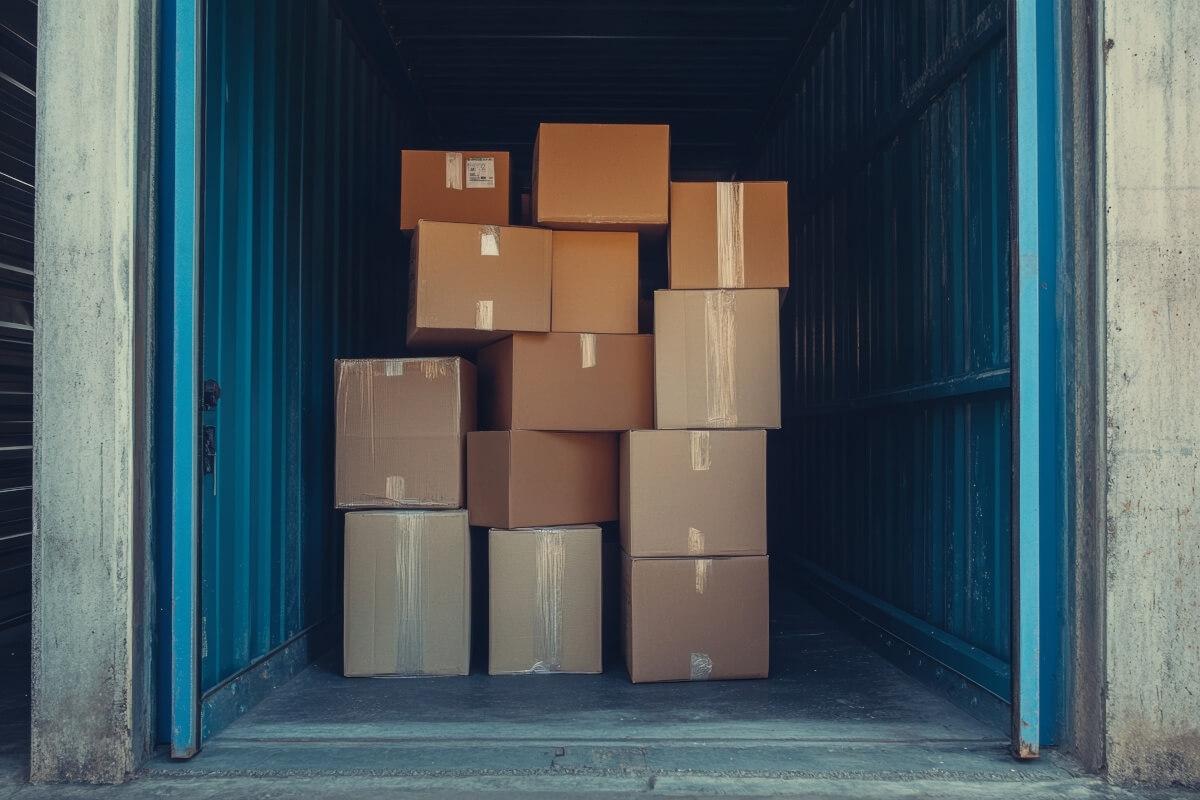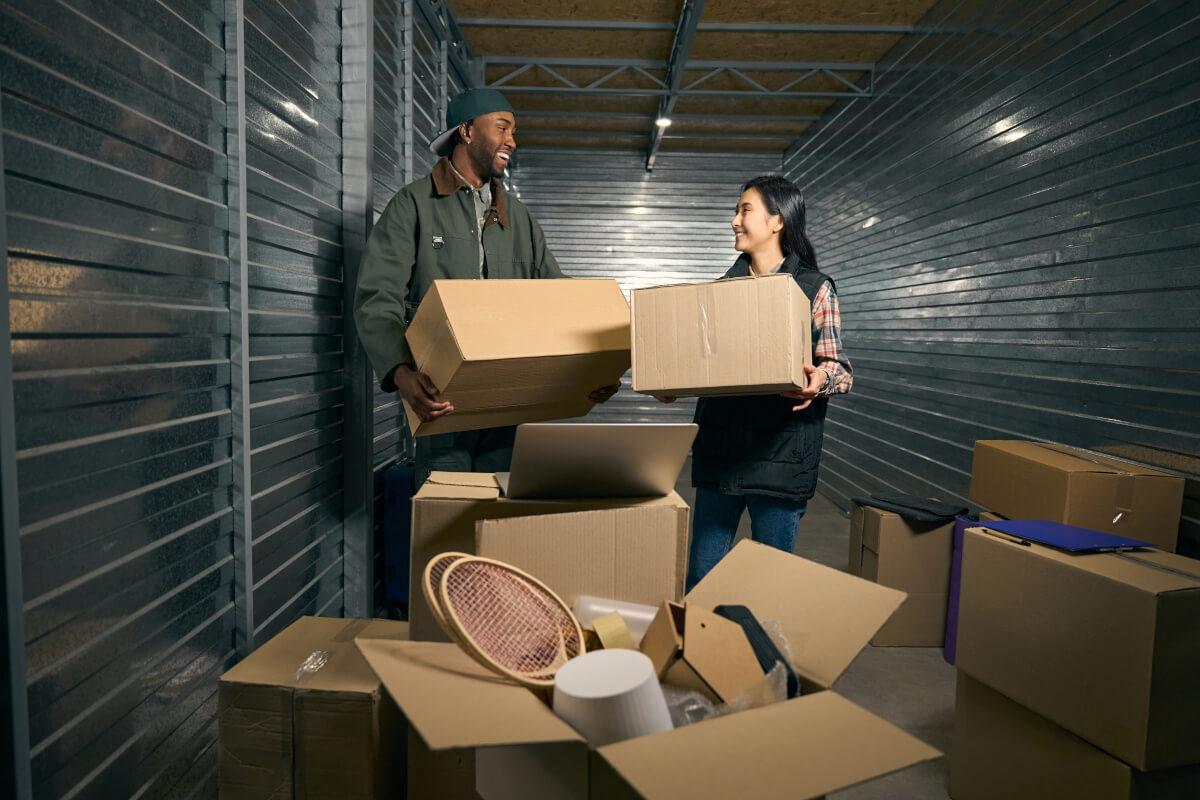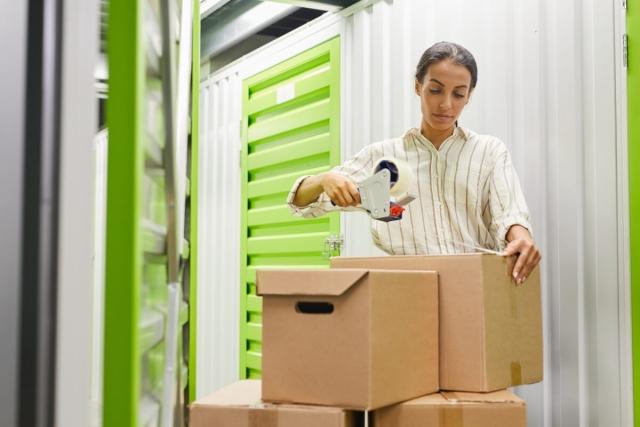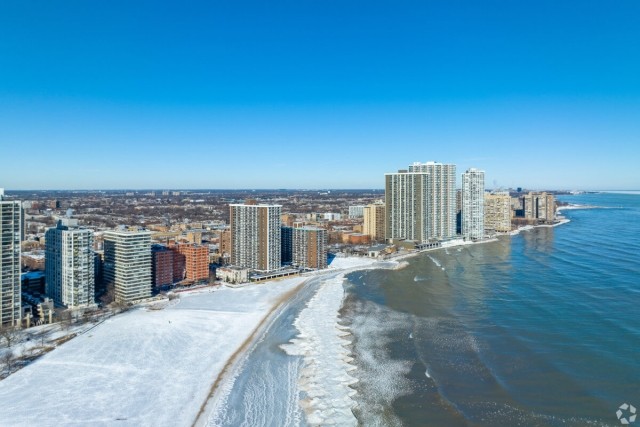Running out of space is a common problem among renters. Whether you’re downsizing from a house to an apartment or just accumulating more stuff as time goes on, maximizing storage is hard with limited square footage. This is where apartment storage units come in.
On-site storage units are a common amenity among today’s apartment communities. They offer a convenient solution for tenants with limited space. However, they require a bit more planning and preparation than standard off-site storage facilities.
In this article, we’ll offer our tips for maximizing space in an apartment storage unit, including:
- Assess your storage needs
- Plan a storage layout
- Packing strategies to use
- What to keep in your apartment storage unit
- How to maintain apartment storage unit organization
Assess Your Storage Needs
If you’re considering a storage unit, you should first figure out your storage needs. How much square footage will you have? Does your apartment have built-in storage? Are there items you could donate or throw away to make room? To answer all these questions, here are some practical tips for assessing your storage needs:
Inventory your items
Assessing storage needs begins with taking inventory. Go through your belongings, one by one. Categorize them into different sections, such as clothing, furniture, décor, etc. This will give you an idea of what exactly you own and what kind of extra storage you’ll need.
Consider accessibility and frequency of use
When taking inventory, consider how often you need and use your items. If you have a lot of infrequently-used things – we’re talking to all the Christmas fanatics out there --- a storage unit could be a huge help. Things like seasonal décor or sporting equipment are great things to put in storage and will really free up space for more essential items.
Explore storage unit sizes
Once you know exactly what’s going to be stored, it’s time to decide how much space you’ll need. Storage units come in multiple sizes, but your options may be more limited with an apartment on-site facility. A 5x5 unit is typically the smallest, with comparable dimensions to a large walk-in closet. Other smaller options include 5x10 and 5x15. Medium units can range from 10x10 to 10x15.
If your apartment community doesn’t offer big enough storage units, you’ll either need to adjust your storage needs or opt for an off-site facility. However, if large units are available, you can take your pick from 10x20, 10x25 and even 10x30 units. These sizes are more comparable to a one or two-car garage, making them ideal for storing larger items like furniture or vehicles.
Plan Your Storage Layout

After selecting a unit size, it’s time to plan your storage layout. While some can get away with just throwing their belongings inside, others need a structured layout to ensure easy access and thoughtful organization. If you’re the latter, here are some ideas for planning a layout for your storage unit:
Sketch a floor plan for your unit
If you’re renting a larger unit, you may benefit from sketching a floor plan before loading your things inside. This will provide a visual representation of the space and help you allocate enough space for each of your items. For example, if you’re storing a large piece of furniture like a couch, you can dedicate a specific area for it. You can also use your floor plan to determine the best way to stack boxes and other items, maximizing the use of vertical space.
Ensure pathways for easy access
Accessibility is crucial for maximizing space in an apartment storage unit. If you can’t physically get to your belongings, what’s the point in paying to store them? Make sure to leave pathways for easy access in your storage unit. That way, when Christmas rolls around and it’s time to dig out your tree, you won’t have to spend hours moving boxes and furniture just to get to it.
Allocate zones for different categories
Another tip for efficient storage is to create zones in your unit. For example, dedicate one corner for holiday décor, another for seasonal clothing, and a separate area for furniture, sports equipment, or any other bulkier items. By allocating zones for different categories, you can easily find what you need without having to sift through everything in your unit.
Packing Strategies for Maximum Efficiency
Next, let’s talk about packing. Putting things in storage almost harms more than helps if you don’t pack correctly. Rather than storing items in a cluttered disarray, utilize some of the storage unit packing strategies below for maximum efficiency:
- Use uniform, clear plastic bins for easy stacking and visibility
- Label all boxes
- Disassemble large furniture to save space
- Utilize vacuum-sealed bags for clothing and linens
- Wrap fragile items in bubble wrap or packing paper
- Use furniture covers to protect against dust and damage
- Place heavier items on the bottom and lighter items on top when stacking
- Store frequently used items toward the front for easy retrieval
These strategies not only make it easier for you to find and access your belongings but also create a more organized and tidy storage unit. This will also come in handy when it's time to move everything out of storage.
What to Keep in Your Apartment Storage Unit

Whether you need a storage unit between moves or you need extra space, there are certain items that work well in storage and others that should never make it into your unit.
What shouldn’t go in a storage unit
First and foremost, storage units are no place for living things—plants, pets, and, of course, people cannot stay in these spaces. Beyond that, certain hazardous, perishable, or fragile items are also off-limits. Here's a quick list of items you should never store:
- Flammable or combustible materials (e.g., gasoline, paint, solvents)
- Toxic chemicals (e.g., chlorine, ammonia, acetone, fertilizers)
- Valuables (e.g., irreplaceable documents, jewelry, family heirlooms)
- Uninsured or non-functional vehicles
- Weapons or ammunition
- Perishables (e.g., food, plants)
- Liquids (e.g., cleaning supplies)
- Anything illegal (e.g., stolen goods, drugs)
- Wet items (to prevent mold and mildew)
Always ensure your items are dry and clean before storing them. If you're unsure about a particular item, consult your landlord or storage provider for clarification.
What works best in a storage unit
Storage units are ideal for items you don’t use daily but want to keep safe and accessible. Here are some examples of what works perfectly in storage:
- Seasonal items like holiday decorations and winter clothing
- Recreational equipment such as bikes, camping gear, and sports gear
- Furniture that you don’t currently need but may use later
- Tools and hobby supplies that are pulled out every now and then
By storing these types of items, you can free up valuable space in your home while keeping your belongings secure.
How to Maintain an Organized Storage Unit
Acquiring and setting up a storage unit is only half the battle. To reap maximum benefits, you also must maintain your unit throughout your lease, ensuring everything stays organized and easily accessible. Below are some tips to help you keep things in order:
Schedule regular check-ins
Just like you schedule regular cleaning and decluttering sessions for your home, make it a habit to visit your storage unit every few months. This will give you the opportunity to reorganize and reassess what needs to stay in storage and what can be removed. It's also a good time to check for any signs of damage or pests that may have made their way into your unit.
Utilize vertical space
Utilizing vertical storage solutions can really elevate an organization. Have a unit full of bikes and tools? Hang your gear on wall-mounted racks. Are your shelves only half full? Consider adding stackable storage bins or using hanging organizers to make use of the often overlooked vertical space. This can not only create more room in your unit, but also make items easier to access and keep organized.
Rotate seasonal items as needed
As the seasons change, so do our storage needs. Take the time to rotate seasonal items in and out of your unit as needed. For example, you may need your skis and snow gear in the winter months, but can put them away during the summer. This allows for more space in your unit and keeps it from becoming cluttered with items that are not currently being used.
Ace Apartment Living with Apartments.com
Finding and maintaining an apartment storage unit isn’t easy, particularly if organization doesn’t come naturally to you. However, with helpful resources like Apartments.com, it’s a lot easier to make the most of your storage space. Whether you need decluttering tips or want to make the most of limited space, we’re your one-stop source for all things apartment living.
This article was originally published on August 9, 2021, by Olivia O’Brien.
FAQs
What’s the best way to organize a cluttered storage unit?
Start by categorizing items into groups (e.g., seasonal, furniture, keepsakes) and label everything clearly. Use clear bins for visibility and create an inventory list to keep track of what’s inside the unit. Arrange frequently used items near the front for easy access.
How can I maximize vertical space in a storage unit?
Utilize sturdy shelving units to stack items safely and efficiently. Store heavier, bulkier items at the bottom and lighter items on top. Additionally, use stackable bins and vacuum-sealed bags for soft items like clothing or bedding to save space.
What should I not put in a storage unit?
Avoid storing perishable food, hazardous materials like chemicals or flammable items, and valuables like jewelry or important documents. Items sensitive to temperature or humidity, such as electronics or antiques, may also be risky unless the unit is climate-controlled.






